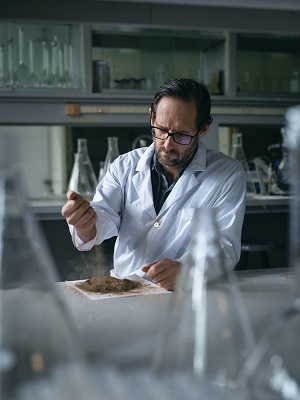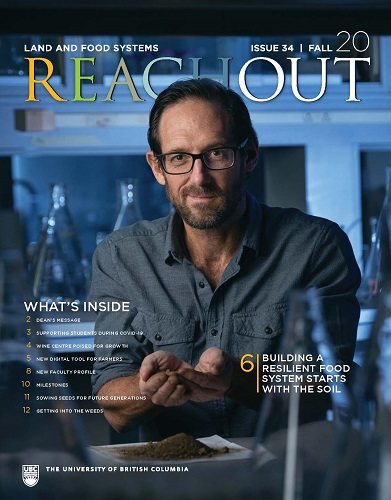Building a Resilient Food System Starts with the Soil

Seeing empty shelves in grocery stores last spring was a shock to many consumers, as most of us have never experienced that in our lifetime. It shone a spotlight on the vulnerabilities of our food system, and opened discussions on how we can better enforce this essential service.
While the food system and supply chain was quick to recover from any shortages, Associate Professor Sean Smukler looks at it as an opportune moment to study the impacts and prepare for any future setbacks. “This year has really helped to identify how fragile our food system is, throughout all stages of it,” he says. “If we want to avoid situations like this in the future, I would argue that resilience needs to start at the farm and specifically with the soil.”
Smukler is the principal investigator of the Sustainable Agricultural Landscapes (SAL) Lab. The lab’s goal is to contribute to understanding the ecology of and management for an agricultural system that meets current needs, without compromising the needs of future generations. “We work with farmers and managers of agricultural landscapes, to find ways to better monitor, protect and enhance biodiversity and the availability of ecosystem services.”
“In terms of impact, the COVID-19 pandemic happened very quickly, but we were also able to recover quickly,” says Smukler. “Something like climate change, which is happening on a slower scale and therefore harder to see, presents a much more challenging problem. The effects of which could be much more challenging to a vulnerable food system.”
The SAL lab works closely with farmers in the Fraser Valley of British Columbia, and hopes to turn some of the future challenges they may face into opportunities. “Studies have shown that temperatures in the valley are expected to increase over the next couple decades, which on the one hand is good news, because farmers can expect to have significantly more growing days. On the other hand, it may introduce new challenges, such as new pests or crop diseases, or an increase need for irrigation as precipitation patterns change.”
For all of these challenges, it helps to start by looking at the foundation of food: soil. “Soils are the basis for building resilience,” says Smukler. “They are the key to any production, as they store water, cycle nutrients, help to resist disease and ultimately grow healthy crops.”
An important measure of soil quality is soil organic carbon. Siddhartho Paul, a recently graduated PhD student in the SAL lab, is the lead author on a paper published this summer that measured soil organic carbon in the Fraser Valley from 1984 to 2018. The paper was co-authored by Smukler, Lyndsey Dowell (another graduate student from the SAL lab), Nicholas Coops in the Faculty of Forestry, Mark Johnson in the Institute for Resources, Environment and Sustainability, Maja Krzic with the Faculties of Land and Food Systems and Forestry, and Dieter Geesing, the B.C. Ministry of Agriculture Provincial Soil Specialist.
In their findings, the group determined that on 61% of farms, soil organic carbon was in decline.
“With soil organic carbon being a key indicator of soil health, the findings of our study is alarming,” says Smukler. “We really need to see levels increasing.”
The study looked at land use change and agriculture production. Some management practices on farms that have been in continuous use since 1984 have been identified as possible reasons for the decline in soil organic carbon, such as intensive tillage which increases losses of carbon to the atmosphere and a lack of cover crop use which helps sequester the carbon back into the soil. The next step of the research will be looking to evaluate which specific methods are contributing to changes in soil organic carbon, and working with farmers to find solutions.
While resilience for the food system begins at the farm, a resilient farm is really a shared challenge. “Scientists need to work directly with farmers, consumers need to understand the situation that farmers are in, and policy makers need to understand what the science is saying and provide the resources to address it,” says Smukler.
Tagged with: 2020, Faculty, Soil Science
